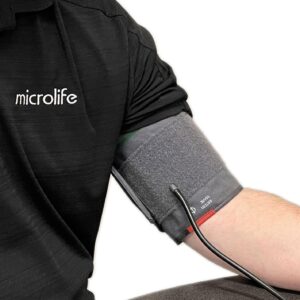Does the sodium-calcium exchanger repolarize the heart?
The heart is a remarkable organ, tirelessly pumping blood and ensuring that our bodies function optimally. But have you ever wondered what happens at the cellular level to maintain its rhythm?
Among the many players in this intricate dance of electrical activity, the sodium-calcium exchanger (NCX) takes center stage.
This fascinating ion transporter plays a crucial role in regulating calcium and sodium levels within cardiac cells, impacting everything from contraction strength to repolarization.

Understanding the Sodium-Calcium Exchanger
The sodium-calcium exchanger (NCX) is a vital membrane protein found in numerous cell types, particularly cardiac cells. Its primary role is to regulate intracellular calcium levels by exchanging sodium ions for calcium ions across the membrane.
When it comes to heart function, this process is essential. During each heartbeat, calcium enters the cell to trigger contraction and then must be removed quickly for the heart muscle to relax properly. The NCX helps achieve this balance efficiently.
What sets NCX apart is its ability to work based on concentration gradients of sodium and calcium. It typically moves three sodium ions into the cell while expelling one calcium ion out. This unique ratio not only influences contractility but also impacts how electrical signals propagate through the heart tissue.
Understanding how NCX operates sheds light on broader cardiac physiology and its implications for health and disease management in cardiovascular contexts.
The Role of Sodium and Calcium in Heart Function
Sodium and calcium play pivotal roles in heart function. These two ions are essential for maintaining the electrical activity that regulates the heartbeat.
Calcium is crucial during each cardiac cycle. It initiates contraction in heart muscle cells, allowing blood to be pumped effectively through the body. Higher levels of intracellular calcium signal these cells to contract.
On the other hand, sodium helps set up the electrical gradients necessary for action potentials. When sodium floods into a cell, it creates a rapid change in voltage, triggering contractions and ensuring timely heartbeats.
The balance between these ions is delicate yet vital. Disruptions can lead to arrhythmias or weakened contractions, impacting overall cardiovascular health significantly. Understanding their interplay sheds light on how our hearts operate day-to-day and respond to various conditions.
How the Sodium-Calcium Exchanger Affects Heart Repolarization
The sodium-calcium exchanger (NCX) plays a pivotal role in heart repolarization. By transporting calcium out of cardiac cells while bringing sodium in, it helps restore the cell’s resting state after each heartbeat.
During depolarization, calcium floods into the cells, triggering contraction. Once this phase is over, NCX kicks into action. It efficiently removes excess calcium that has entered during contraction.
This process is essential for returning the membrane potential to its baseline level. Without the proper functioning of NCX, repolarization becomes compromised.
When NCX operates optimally, it significantly influences the rhythm and stability of heartbeats. Disruptions in its activity can lead to arrhythmias or other heart issues.
Given its crucial functions, understanding how does the sodium-calcium exchanger work in the heart provides valuable insights into maintaining cardiac health and preventing disease.
Research and Studies on the Sodium-Calcium Exchanger in Relation to Heart Health
Recent studies have highlighted the sodium-calcium exchanger’s vital role in heart health. Researchers have focused on how this ion exchanger operates within cardiac cells, particularly during repolarization.
Investigations reveal that disruptions in NCX function can lead to arrhythmias and other cardiovascular issues. By regulating intracellular calcium levels, the exchanger maintains the delicate balance necessary for effective heartbeats.
A variety of experimental models, including animal studies and human tissue samples, offer insights into its impact on electrical activity. These findings suggest that alterations in NCX expression may contribute to heart disease progression.
Moreover, advanced imaging techniques allow scientists to visualize these processes in real time. This research is paving the way for potential therapeutic approaches targeting NCX as a means to enhance cardiac function and treat related conditions effectively.
Implications for Treating Heart Conditions
The sodium-calcium exchanger (NCX) plays a vital role in cardiac health, impacting how we approach heart conditions. Targeting NCX could lead to innovative therapies for arrhythmias and heart failure.
By understanding how the NCX operates, researchers can explore ways to modulate its function. This could help restore normal rhythm and improve contractility in weakened hearts.
Pharmacological agents designed to enhance or inhibit NCX activity are under investigation. These treatments aim to fine-tune calcium levels within cardiac cells, promoting better electrical stability.
Moreover, personalized medicine may benefit from insights into individual variations in NCX expression and function. This tailored approach holds promise for optimizing treatment strategies for patients with different types of heart disease.
Integrating knowledge about ion exchangers like NCX into existing therapeutic frameworks could pave the way for more effective interventions in cardiology practices worldwide.
Other Factors that Contribute to Heart Repolarization
Heart repolarization is a complex process influenced by various factors beyond the sodium-calcium exchanger. One prominent element is the balance of potassium ions within cardiac cells. Potassium channels play a crucial role, allowing K+ to exit the cell and helping restore its resting membrane potential.
Another key contributor is the autonomic nervous system, which modulates heart rate and rhythm through sympathetic and parasympathetic pathways. This regulation can significantly impact how repolarization occurs during each heartbeat.
Hormonal influences also matter. Adrenaline spikes can accelerate repolarization, while other hormones may slow it down.
Additionally, pH levels in the bloodstream affect ion channel activity, adding another layer of complexity to this intricate dance of electrical signals. Each factor intricately intertwines with others, creating a finely tuned system that keeps our hearts beating effectively.
Conclusion
The sodium-calcium exchanger (NCX) plays a critical role in maintaining the rhythm and health of the heart. Understanding how it operates offers valuable insights into cardiac function and its implications for heart disease. By regulating calcium and sodium levels, NCX directly influences repolarization—the process that resets the electrical state of heart cells after each contraction.
Research has shown that disruptions in this mechanism can lead to arrhythmias and other cardiovascular issues. As we learn more about how ion exchangers regulate heartbeats, their importance becomes increasingly clear. The delicate balance created by these exchangers is essential not just for normal cardiac function but also for understanding potential treatments for various heart conditions.
Recognizing the relationship between calcium ions and heart repolarization further highlights why NCX is vital to cardiac health. Emerging studies continue to investigate its impact on the electrical activity of the heart, paving new avenues for therapeutic strategies aimed at improving outcomes in patients with heart disease.
As research progresses, a deeper appreciation of how does the sodium-calcium exchanger work in the heart could lead us toward innovative solutions tailored to individual needs, ultimately enhancing our approach to cardiovascular care.



